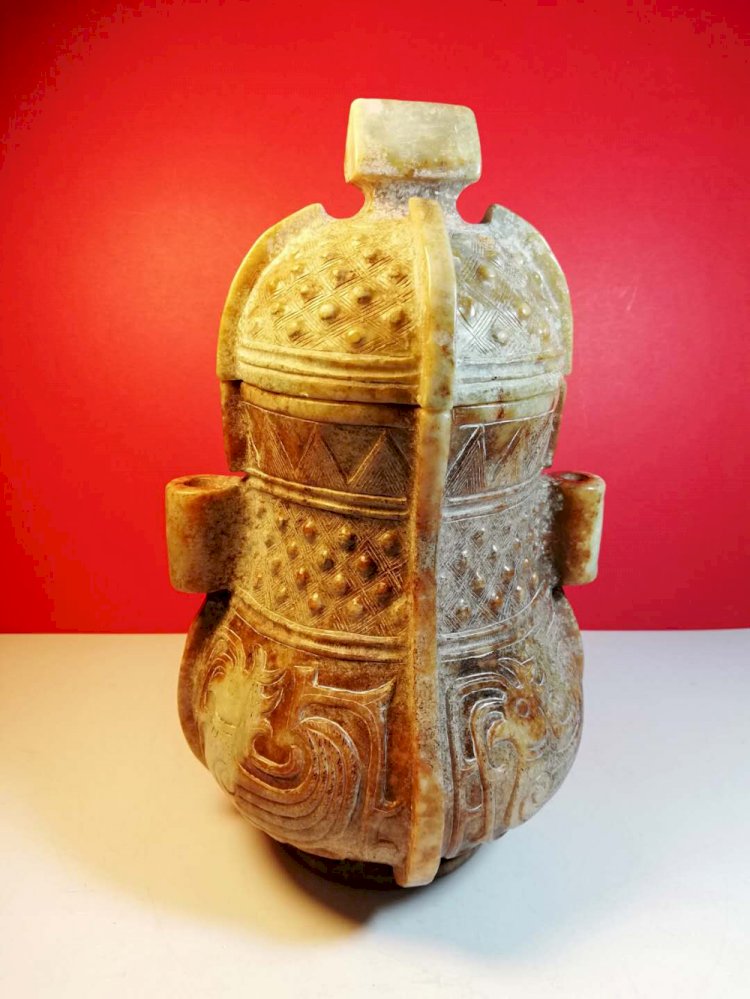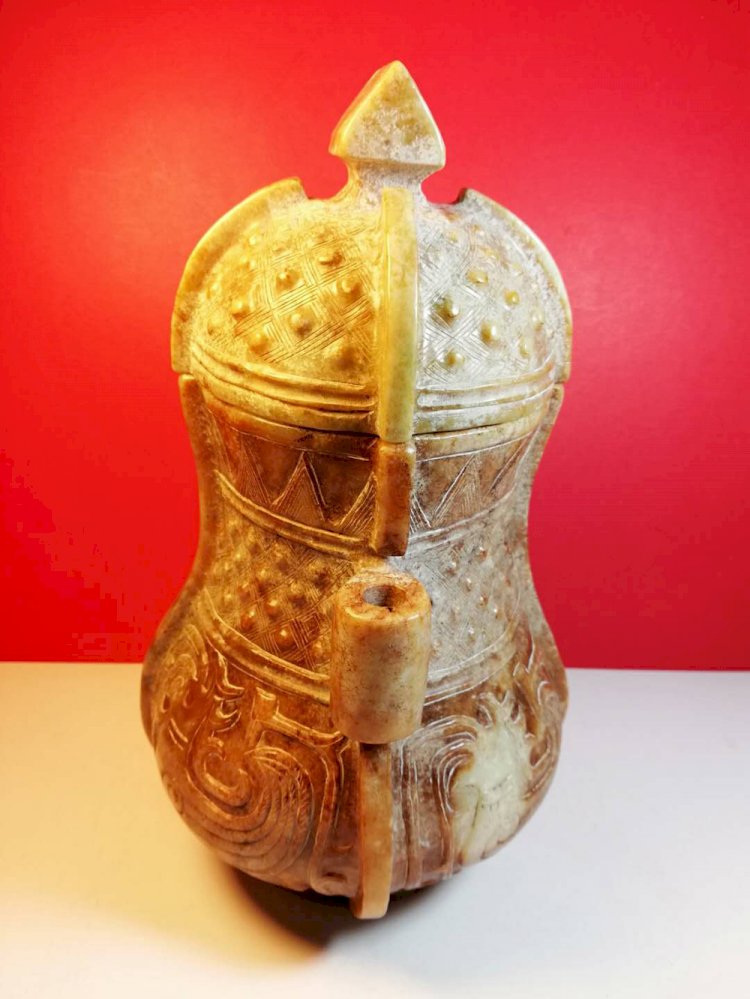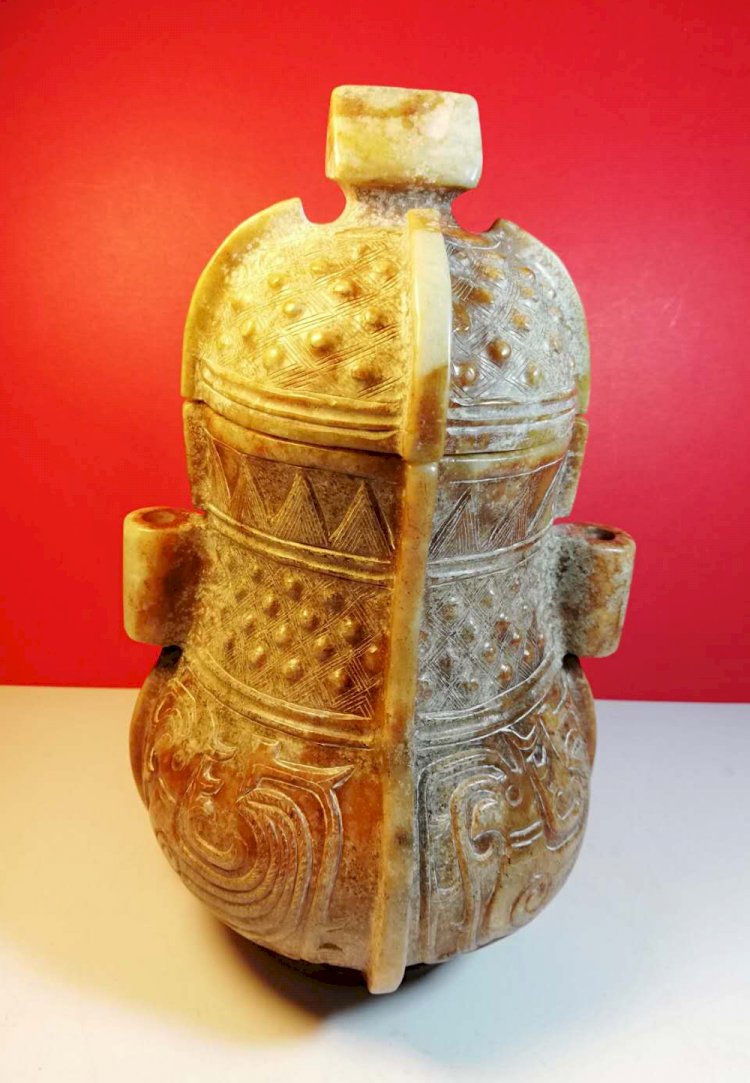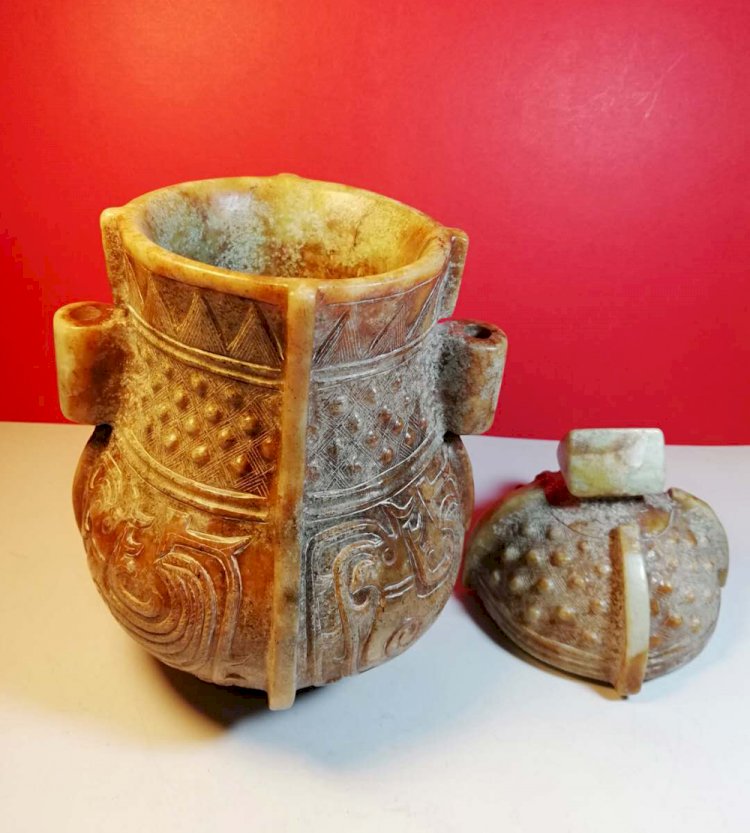E51 Sacrificial Jade Vessel of Ancestral Temple with cover and Double Ears
Sacrificial Jade Vessel of Ancestral Temple with cover and Double Ears
E51 Sacrificial Jade Vessel of Ancestral Temple with cover and Double Ears (Height: 20.30cm)
Green & yellow jade, the top of the cover is a triangular solid rectangle, all four sides of the cover are nipple pattern lines, which are separated by four convex edges; the jade statue has two cylindrical ears on both sides for decoration, and around the ears are also carved nipple pattern lines, which are also separated by four convex edges, which are symmetrical with the jade cover; the four convex edges go from the top of the cover to the bottom of the statue; the mouth of the statue is slightly skimmed, with a circle of slightly convex body, and the bottom is four groups separated by four convex edges, each group of shallow relief four The shape of the long triangle is the ornament; the belly of the jade vessel is also divided into four convex edges, each of which is decorated with a beautiful crown and phoenix pattern of feathers.
The bottom of the jade statue is round and concave, and the wider edge of the bottom is light element. The seal script "future generations will always be used as treasures" is carved on half of the edge. In the spring and Autumn period and the Warring States period, there were many inscriptions similar to the inscription "future generations will always be used as treasures" in the bronze sacrificial vessels of the ancestral temples of all states. In the early spring and Autumn period, there were more than 130 states divided and wars were frequent! In ancient times, great importance was attached to the sacrifice of the ancestral temple. The ceremony was ceremonious and complicated. It was held on time all the year round without interruption.
The display of sacrifice is regarded as a symbol of the prosperity of descendants, and also as a sacred and inviolable vessel. In ancient wars, the victors sometimes took away the sacrificial vessels of the defeated, which is the most severe work. Because the sacrificial vessels of these temples were called "important vessels" at that time. The "moving important vessels" often mentioned in ancient books refers to the most vicious plunder, which makes the defeated people have the fear of losing their children and grandchildren. In ancient times, it was thought that the sacrificial vessels had been taken away, which meant that they would be extinct. Therefore, in these sacrificial utensils, the words " children and grandchildren will cherish and use it forever" and "generations will cherish and use it forever" are often cast.
This jade vessel has the same shape as similar bronze statues, and the forms of these statues are also found from time to time in sacrificial vessels. And jade products are more difficult than bronze products, so the number of jade sacrificial vessels is less, and the value is higher! After the Duke of Zhou made rites and music, jade was more widely used in Rites: the imperial seal, the six auspicious vessels used for official worship and the six vessels used for sacrificing heaven and earth were all made of jade!
This rare jade statue is engraved with the inscription "generations will cherish and use it forever" on the bottom. It is the same system and homology with the bronze sacrificial vessels of the ancestral temple in the spring and Autumn period and the Warring States period. It obviously belongs to the sacrificial vessels of the same period. More rare, it has higher historical significance and value, which is beyond doubt!
































